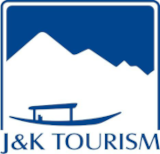Climbing Grades
INTERNATIONAL FRENCH ADJECTIVAL SYSTEM (IFAS) | ||
| SCALE | DIFFICULTY | DESCRIPTION |
F | FACILE (easy) | Straightforward, possibly a glacial approach, snow and ice will often be at an easy angle. |
PD | PEU DIFFICILE (slightly difficult) | Routes may be longer at altitude, with snow and ice slopes up to 45 degrees. Glaciers are more complex, scrambling is harder, climbing may require some belaying, descent may involve rappelling. More objective hazards. |
AD | ASSSEZ DIFFICILE (fairly difficult) | Fairly hard, snow and ice at an angle of 45-65 degrees, rock climbing up to UIAA grade III, but not sustained, belayed climbing in addition to a large amount of exposed but easier terrain. Significant objective hazard. |
D | DIFFICILE (difficult) | Hard, more serious with rock climbing at IV and V, snow and ice slopes at 50-70 degrees. Routes may be long and sustained or harder but shorter. Serious objective hazards. |
TD | TRÈS DIFFICILE (very difficult) | Very hard, routes at this grades are serious undertakings with high level of objective danger. Sustained snow and ice at an angle of 65-80 degrees, rock climbing at grade V and VI with possible aid, very long sections of hard climbing. |
ED | EXTRÊMEMENT DIFFICILE (extremely difficult) | Extremely hard, exceptional objective danger, vertical ice slopes and rock climbing up to VI to VIII, with possible aid pitches. |


